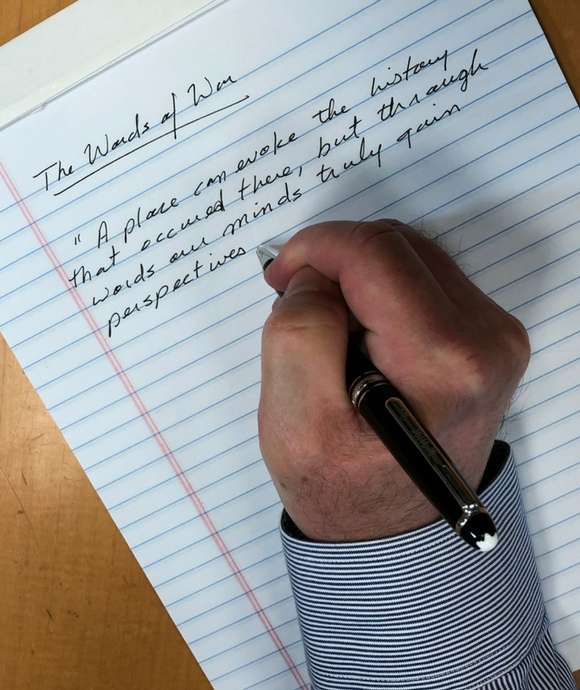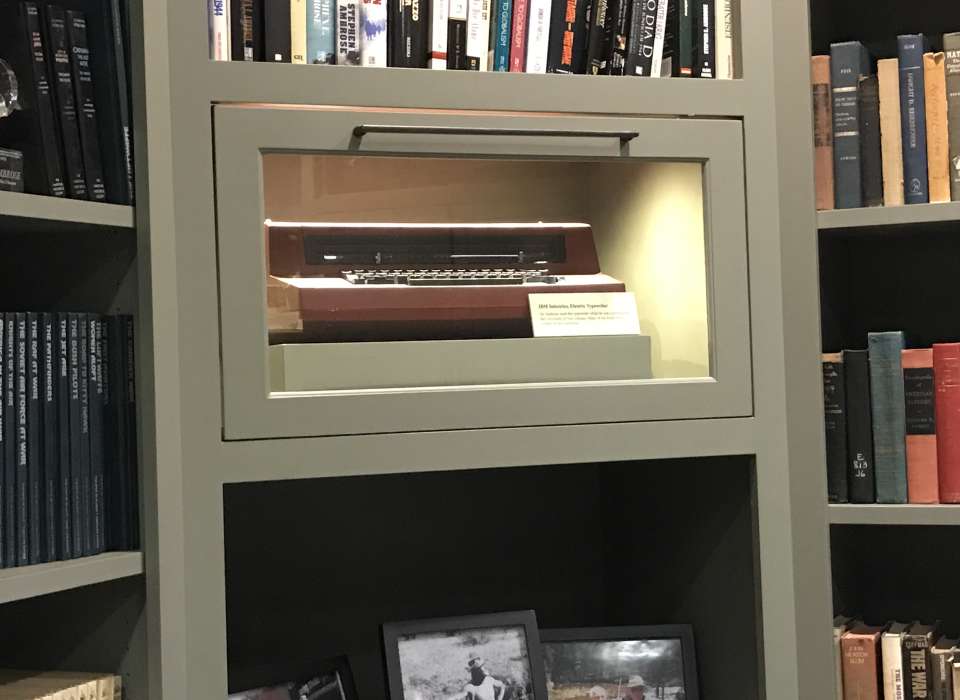“As the twilight turned to darkness, the last men got on board their planes. Eisenhower was out on the runway, calling out ‘Good luck!’ He noticed a short private, in Eisenhower’s words ‘more equipment than soldier,’ who snapped him a salute. Eisenhower returned it. Then the private turned to the east and called out, ‘Look out, Hitler. Here we come!’
The pilots started their engines. A giant cacophony of sound engulfed the airfield as each C-47 in its turn lurched into line on the taxi strip. At the head of the runway, the pilots locked the brakes and ran up the engines until they screamed. Then, at ten-second intervals, they released the brakes and started down the runway, slowly at first, gathering speed, so overloaded that they barely made it into the sky.
When the last plane roared off, Eisenhower turned to his driver, Kay Summersby. She saw tears in his eyes. He began to walk slowly toward his car. ‘Well,’ he said quietly, ‘it’s on.’”
Stephen Ambrose, D-Day June 6, 1944: The Climactic Battle of World War II, p. 194-195.
What makes the above passage so memorable is not just the famous historic scene that it describes nearly 75 years ago, but how the passion of the historian who wrote it transformed how we today remember the entire WWII generation.
The late Dr. Stephen Ambrose had already had the idea of a museum dedicated to the Allied troops who invaded Normandy before he published his book D-Day June 6, 1944: The Climactic Battle of World War II for the 50th anniversary of the landings in 1994. In researching his book, Ambrose had collected oral histories from WWII veterans, including British and German veterans, to tell in their own words the story of the greatest amphibious invasion in history. For over 40 years after the war, WWII veterans were notably reluctant to talk about their experiences. But beginning with President Ronald Reagan’s commemoration speech at Point du Hoc in 1984 and encouraged by the work of historians like Ambrose, that rapidly changed, and the WWII generation opened up about their wartime experiences. As public interest and historical awareness about the often extraordinary contributions of average Americans to the defeat of Nazi Germany and Imperial Japan spread, the meaning of the Allied victory in World War II to our current world has been made clearer to succeeding generations.
Together with his best friend Dr. Nick Mueller, Stephen Ambrose succeeded in founding The National D-Day Museum, which opened on June 6, 2000, in New Orleans. The oral histories and artifacts that the veterans entrusted to Ambrose to tell their stories became the nucleus of the museum’s collection. In 2004, Congress passed a resolution that expanded the Museum’s mission to tell the entire American experience in the war—why it was fought, how it was won, and what it means today—and transformed the original museum into The National WWII Museum.
In The National WWII Museum today, the typewriter that Stephen Ambrose used to write his books is on display in a private room. When he wrote the passage above that brought General Dwight Eisenhower and the Allied Expeditionary Force to the point of no turning back on D-Day, Ambrose could not have known the fate of where his typewriter would one day reside, any more than Eisenhower could know the individual fates of the departing paratroopers who were only a fraction of the hundreds of thousands of men upon whose shoulders ultimate victory or defeat depended. But Ambrose knew the sacrifices that the men and women who fought World War II had made on our behalf, and wanted others to know about and remember them as well. It is for our benefit today, and future generations tomorrow, that both succeeded in their tasks.

“A place can evoke the history that occurred there, but through words our minds truly gain perspectives and understanding of what it was like to know, feel, experience, hope, fail, triumph, and live through events from which we ourselves were absent. The written word is our most intricate map to retrace and reconstruct what we think happened, and ultimately brings us back to ourselves.”
-Keith Huxen, PhD, Senior Director of Research and History, The National World War II Museum
Keith Huxen
Keith is the former Senior Director of Research and History in the Institute for the Study of War and Democracy at The National WWII Museum.
Cite this article:
MLA Citation:
APA Citation:
Chicago Style Citation:





![Max Fuchs, New York City cantor, sings as Rabbi Sydney [sic] Lefkowitz, Richmond, VA, conducts the first Jewish services from Germany.](/sites/default/files/styles/max_650x650/public/2025-10/image1.jpg)



